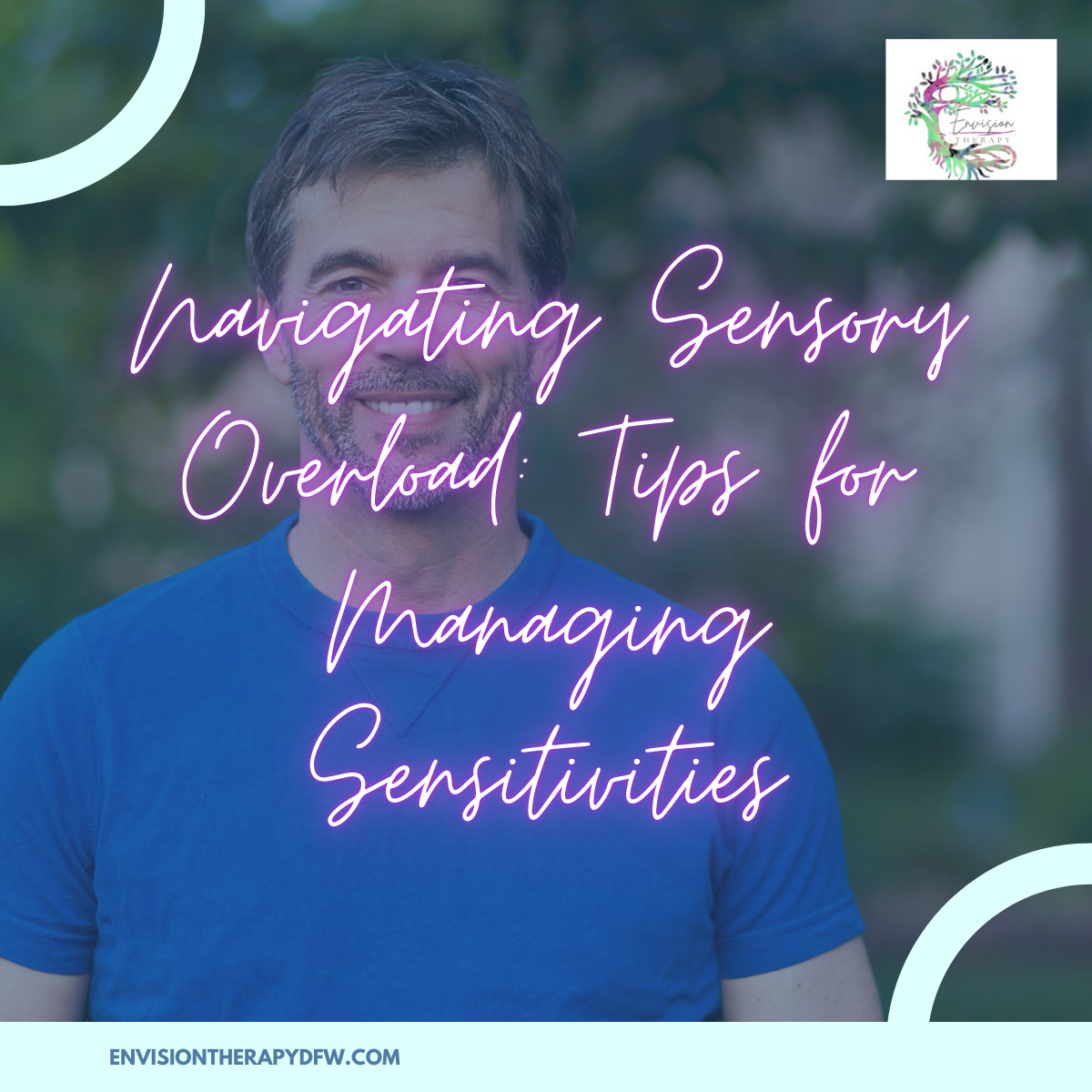Living with sensory sensitivities can make everyday experiences feel overwhelming. For those with ADHD and/or Autism, navigating a world full of sensory input can be particularly challenging. If you find yourself frequently overwhelmed by sounds, lights, textures, or smells, you’re not alone. Here are some practical strategies to help you manage sensory overload and create a more comfortable environment.
Understanding Sensory Overload
Sensory overload occurs when one or more of your senses are overstimulated, leading to feelings of anxiety, discomfort, or even physical pain. This can happen in various environments, from busy shopping malls to noisy office spaces. Imagine trying to focus on a conversation while a loud air conditioner hums in the background, fluorescent lights flicker overhead, and the scent of someone’s perfume fills the room. Each of these sensory inputs can add to your stress, making it difficult to concentrate or remain calm.
Practical Tips for Managing Sensitivities
1. Create a Sensory-Friendly Space
Having a dedicated space where you can retreat from sensory overload is crucial. This space should be quiet, dimly lit, and filled with items that provide comfort and relaxation.
Example Situation: After a long day at work, you come home to your sensory-friendly space. You dim the lights, put on noise-canceling headphones, and wrap yourself in a soft blanket. This environment helps you decompress and recharge.
2. Use Noise-Canceling Headphones
Noise-canceling headphones can be a lifesaver in noisy environments. They help block out background noise, allowing you to focus or relax without being overwhelmed by sounds.
Example Situation: At the office, you put on your noise-canceling headphones during a particularly loud lunch break. The reduction in noise helps you concentrate on your work and reduces your stress levels.
3. Wear Sunglasses or Tinted Glasses
Bright lights can be a significant trigger for sensory overload. Wearing sunglasses or tinted glasses can help reduce glare and soften harsh lighting.
Example Situation: You enter a brightly lit grocery store and immediately feel the lights are too harsh. You put on your tinted glasses, and the softening effect makes the shopping experience more manageable.
4. Carry Sensory Tools
Keep a small bag of sensory tools with you, such as fidget toys, stress balls, or scented lotions. These tools can provide comfort and help you manage sensory input when you’re on the go.
Example Situation: While waiting in a crowded doctor’s office, you pull out a stress ball from your bag. Squeezing the ball helps you focus on a tactile sensation, making the wait less overwhelming.
5. Practice Deep Breathing and Mindfulness
Deep breathing and mindfulness techniques can help you stay calm during moments of sensory overload. Practice focusing on your breath and grounding yourself in the present moment.
Example Situation: At a noisy family gathering, you start to feel overwhelmed. You step outside, take deep breaths, and focus on the sensation of your feet on the ground. This practice helps you regain your composure.
6. Use White Noise Machines
White noise machines can help mask background sounds that might be distracting or overwhelming. They create a consistent auditory environment that can be soothing.
Example Situation: At bedtime, you turn on your white noise machine to drown out the sound of traffic outside your window. The steady hum helps you relax and fall asleep more easily.
7. Establish Routines
Routines can provide a sense of predictability and control, reducing the likelihood of sensory overload. Establish regular routines for meals, work, and relaxation.
Example Situation: You follow a nightly routine: a warm bath, dim lighting, and calming music. This routine signals your brain that it’s time to unwind, making it easier to manage sensory input.
8. Communicate Your Needs
Don’t hesitate to communicate your sensory needs to those around you. Let friends, family, and coworkers know what triggers sensory overload for you and how they can help.
Example Situation: You explain to your coworkers that strong perfumes trigger sensory overload for you. They agree to use milder scents in the office, creating a more comfortable work environment.
9. Take Regular Breaks
Taking regular breaks throughout the day can help you avoid sensory overload. Use these breaks to step outside, stretch, or simply close your eyes for a few minutes.
Example Situation: During a busy workday, you schedule a 10-minute break every hour. You use this time to step outside for fresh air and a mental reset, helping you stay focused and calm.
10. Seek Professional Support
If sensory overload significantly impacts your daily life, consider seeking support from a therapist or occupational therapist. They can provide personalized strategies and tools to help you manage sensory sensitivities.
Verbalization:
“Today, I’ll make sure to carry my sensory tools with me. If I start to feel overwhelmed at work, I’ll take a break and use my noise-canceling headphones. I’ll also communicate my needs to my coworkers to create a more supportive environment.”
Managing sensory overload with ADHD and/or Autism requires a proactive approach and personalized strategies. By creating a sensory-friendly space, using noise-canceling headphones, wearing tinted glasses, carrying sensory tools, practicing deep breathing, using white noise machines, establishing routines, communicating your needs, taking regular breaks, and seeking professional support, you can navigate sensory sensitivities more effectively and enhance your overall well-being.
Explore effective strategies to manage sensory overload with ADHD and Autism by working with Elizabeth. Implement practical tips to create a comfortable environment and reduce sensory stress.
TLDR:
Learn practical tips for managing sensory overload with ADHD and Autism. Create sensory-friendly spaces, use tools like noise-canceling headphones, and practice mindfulness to reduce sensory stress.
SEO: ADHD, Autism, sensory overload, sensory sensitivities, managing sensory input, ADHD strategies, Autism strategies, sensory tools, sensory-friendly environments, mindfulness

